This guide will show you how to grow chili peppers of all types in your own home garden and includes answers to many of your growing questions, such as pepper plant spacing, sun needs, length of growing season, chili pepper growing tips and more.
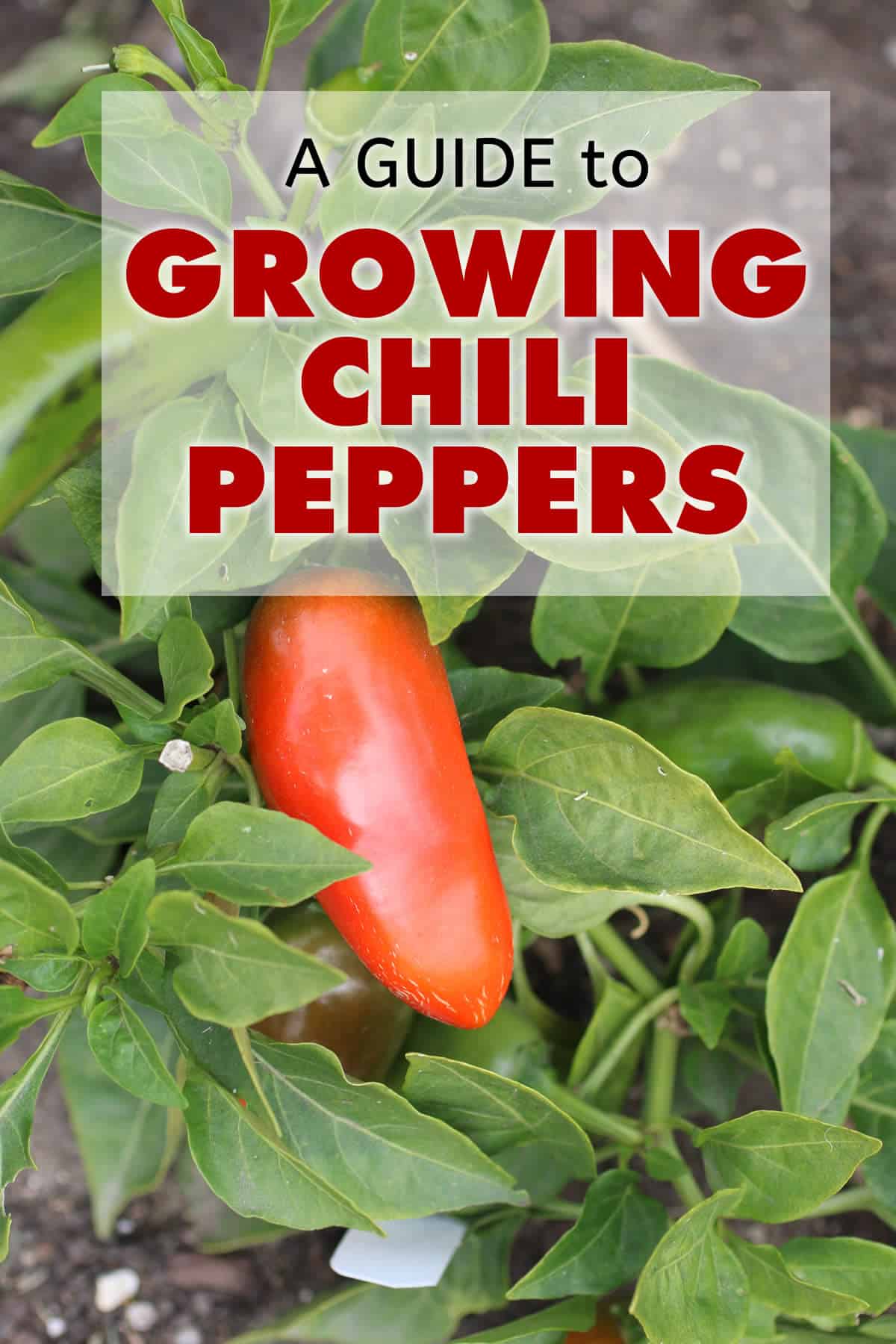
Let's talk about growing chili peppers. Chili peppers start off a bit slow, so it is helpful to start to grow your plants indoors a few weeks (anywhere from 8-12 weeks) before transferring them outside. Keep the early soil and budding plants constantly moist, but do not over water.
Keep them warm (80 -85 degrees F is best) and in a sunlit place. If this is your first time growing your chili peppers from seeds, learn more about growing chili peppers from seed.
Once there is no worry of frost, you can plant your pepper plants to your garden or chosen spot. Choose a location with full sunlight, as chili peppers LOVE the sun. Mix in some mushroom compost or other organic compost to make the soil fertile and moist.
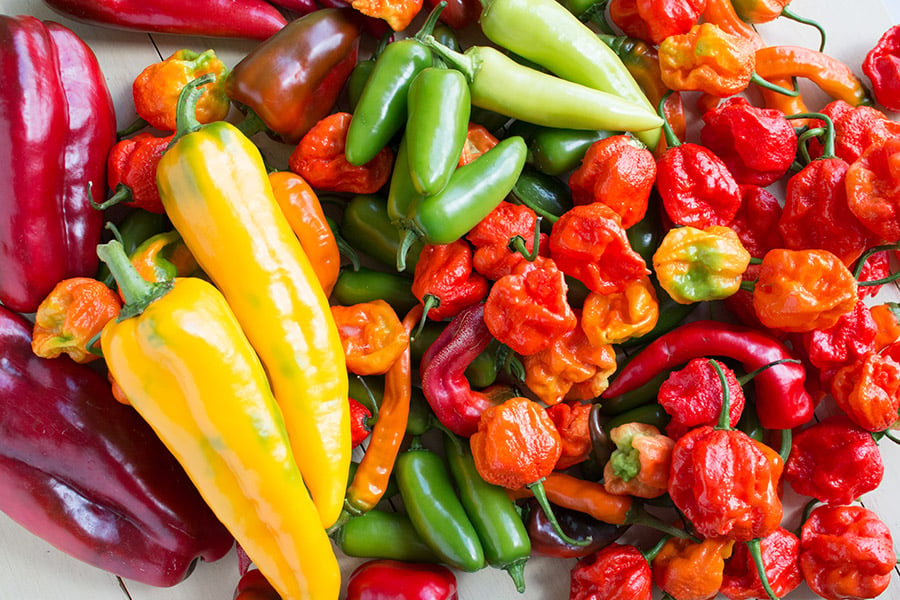
How much space do peppers need to grow?
Space the chili pepper plants 18 - 36 inches apart with about 2 -3 feet between rows. The plants will eventually grow to nearly 3 feet high.
Water! Keep the soil constantly moist, but not soaking wet. Chili peppers love water as much as they love sun, but you don't want to inundate the plants, or you run the risk of rotting. Water every other day or every third day. Include a good plant food product. Learn more about growing chili peppers in the ground or garden.
Keep your chili pepper garden well weeded. You don't want nasty weeds stealing the water from your chili peppers.
Learn more about growing and harvesting chili peppers through the links below, including:
Best Soil for Growing Chili Peppers
Choose a good quality soil or potting mix for growing your pepper that allows for good drainage. Add compost or manure before planting if you’d like.
Watering Your Pepper Plants
As with growing chili peppers in general, keep the soil moist but do not overwater them. For pepper plants in pots or containers, do not let the soil dry out completely. When peppers start to grow, cut back on your watering schedule a bit, but again, do not let the soil dry out.
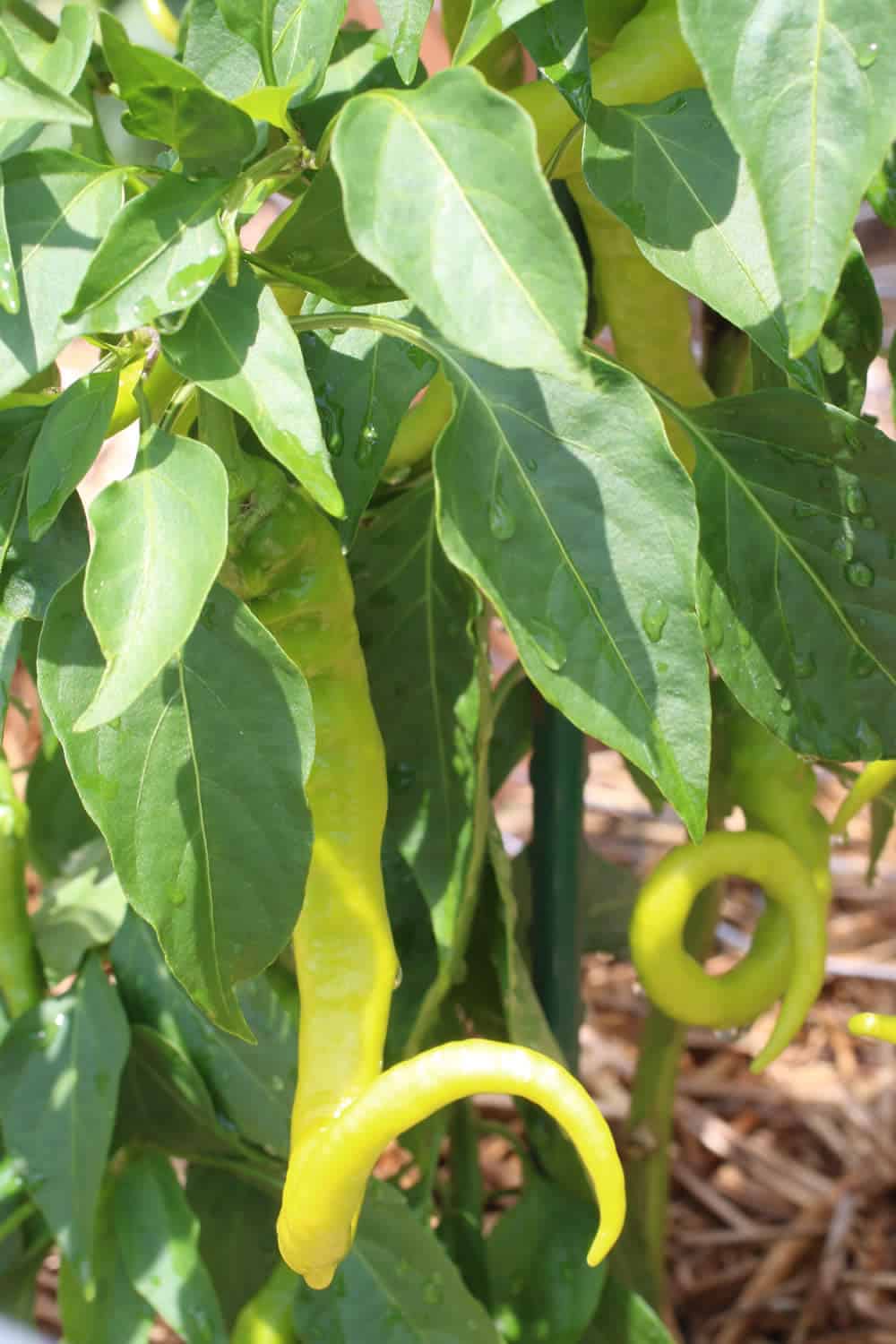
Optimal Growing Temperature for Growing Chili Peppers
The ideal growing temperature for chili pepper plants is between 70-90 F (21-32 C).
Best Fertilizer for Growing Chili Peppers
Tomato fertilizers work well for chili pepper plants, as do compost and well-rotted manure. A good 5-10-10 fertilizer is usually sufficient for peppers. Work it into the soil before transplanting, about 3 pounds per 100 square feet. We use a solution of fish emulsion and seaweed.
Once the peppers begin to appear, fertilize one more time. You can also use manure or compost, which releases more slowly into the soil. Much, however, is affected by your soil, so you may want to consider a soil test if you are having issues.
Diseases and Pests That Affect Pepper Plants
Stay vigilant with your pepper plants. Keep a constant eye out for common diseases like bacterial spot, mildew or rotting. Pests like aphids or spiders are common as well, so watch out for them.
Frequently Asked Questions about Growing Chili Peppers
I get a lot of questions about growing chili peppers. Here are some of the most frequent.
Do chili plants need sun or shade?
Chili peppers grow nicely in full sun. They will grow in partial shade, but they won't be as productive. A sunny spot is best. I have very successfully grown many varieties of chili peppers under my backyard deck, which is about 12 feet high. There is partial shade, but the garden gets a good dose of sunlight, so they grow very well.
How long does it take to grow peppers?
The length of growing time for chili peppers varies from pepper to pepper, though most mature in 60-150 days, which is a big range. Sweeter peppers typically mature in 60-90 days, with hotter peppers taking longer.
Consider, though - the number of days to maturity noted on seed packets means h the days after transplanting until the pepper plant bears mature peppers. It does not take into consideration the time it takes from planting seeds to growing into a seedling that you can transplant, which is about 8-10 weeks, so keep this in mind.
How long does a pepper plant take to bear fruit?
The length of time for chili pepper plants to start bearing peppers varies from pepper to pepper, though most mature in 60-150 days, which is a big range. Sweeter peppers typically mature in 60-90 days, with hotter peppers taking longer, up to 150 days.
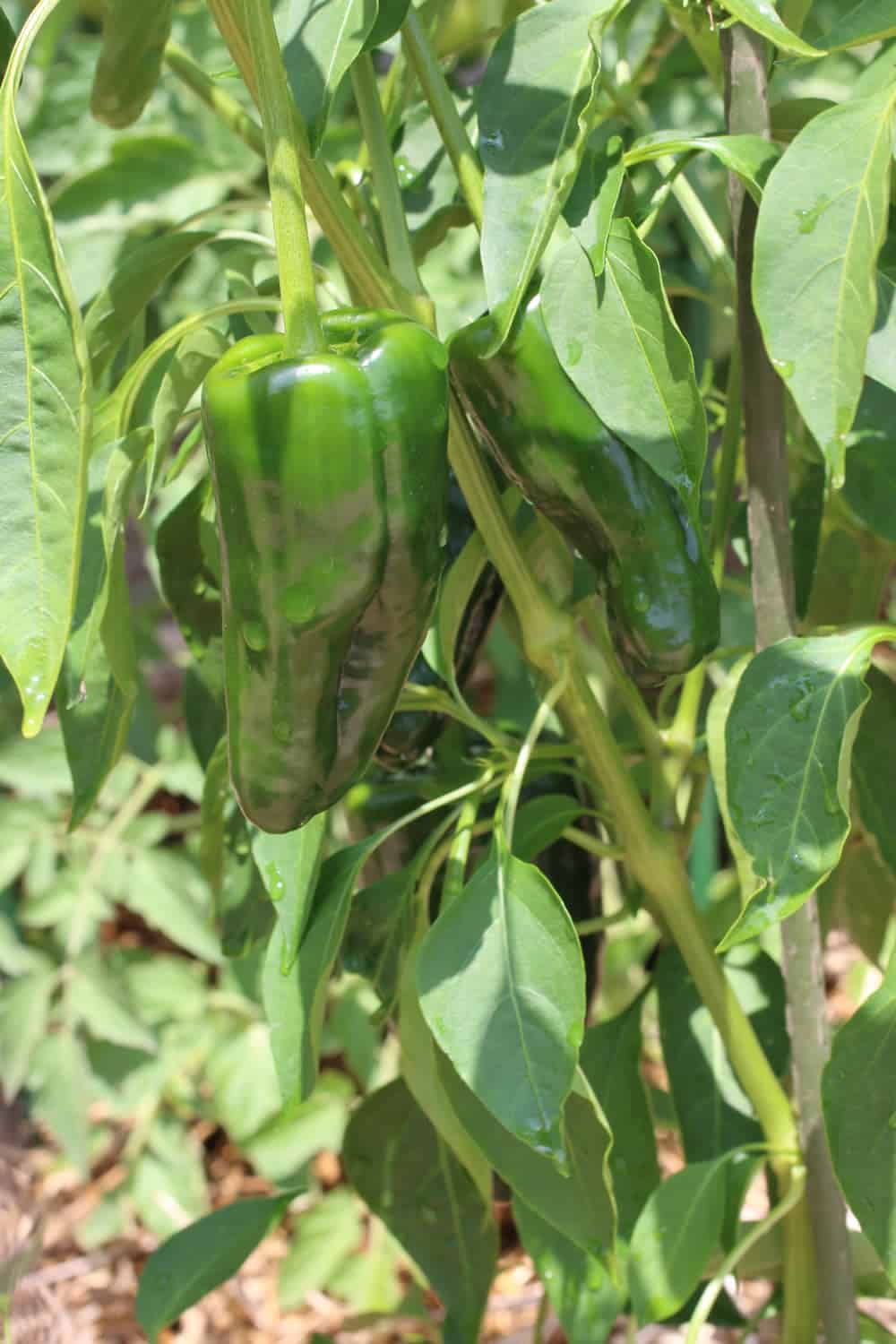
What is the best food for chili pepper plants?
A good 5-10-10 fertilizer is usually sufficient for peppers. Work it into the soil before transplanting, about 3 pounds per 100 square feet. We use a solution of fish emulsion and seaweed.
Once the peppers begin to appear, fertilize one more time. You can also use manure or compost, which releases more slowly into the soil. Much, however, is affected by your soil, so you may want to consider a soil test if you are having issues.
How long can you keep chili plants?
Most chili pepper plants will only last a season in your garden, but if you transplant them and bring them indoors, and treat them to good conditions, you can keep them through the year and possibly longer. Some people have reported keeping their pepper plants for 3 years or longer.
Can you save seeds from your chili pepper plants and use them to grow plants later?
Absolutely! As a chili pepper grower, you may want to save the seeds from your current batch of chili peppers rather than purchase new seeds each year. Saving seeds also saves money, and ensures your harvest will include your very favorite peppers from season to season.
Luckily for us, chili peppers lend themselves to easy seed saving. Harvesting the seeds is a simple process, and they require very little effort to dry and store.
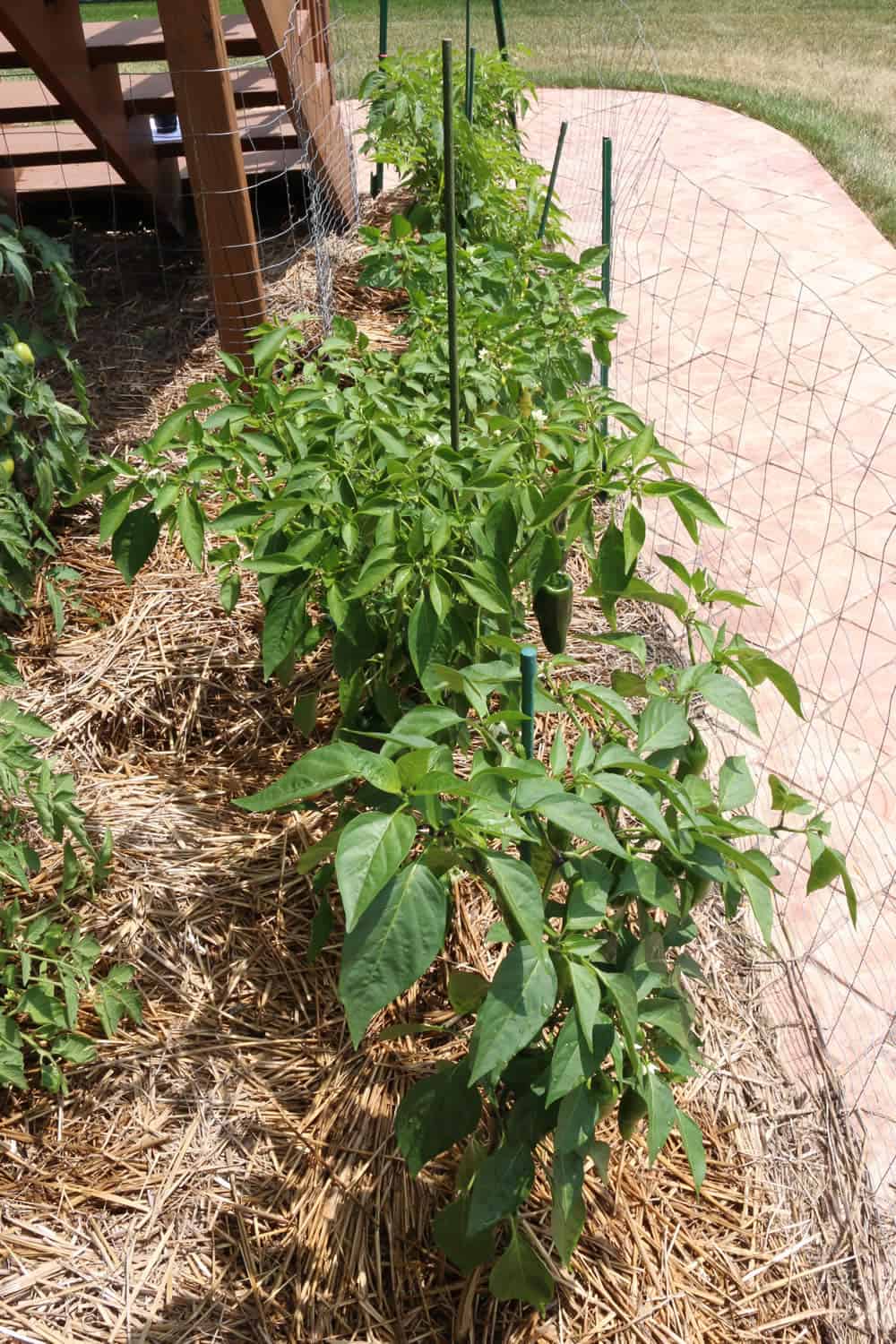
Chili Pepper Growing Tips
For successfully growing peppers, keep these growing tips in mind.
Do Not Over Water Your Pepper Plants
Pepper plants love their water, of course, and they need a steady supply, but peppers won't grow well in overly saturated soil. It waterlogs their roots. Use soil that retains moisture yet has proper drainage. Mulch is useful to prevent water evaporation.
If you are uncertain about watering, don't. Never over-water. Most diseases and growing problems are due to overwatering.
Do Not Overfertilize Your Pepper Plants
Using a lot of fertilizer may help the pepper plant to develop bright leaves and flowers, but hinders pepper production. A good 5-10-10 fertilizer is usually sufficient for peppers. Work it into the soil before transplanting. We use a solution of fish emulsion and seaweed.
Pinch Your Pepper Plants for Bushier Plants
When the pepper plant is about six inches high, clipping the growing tip will result in a bushier plant. Remove any flowers that appear early, as the early flowers diminish the plants overall energy.
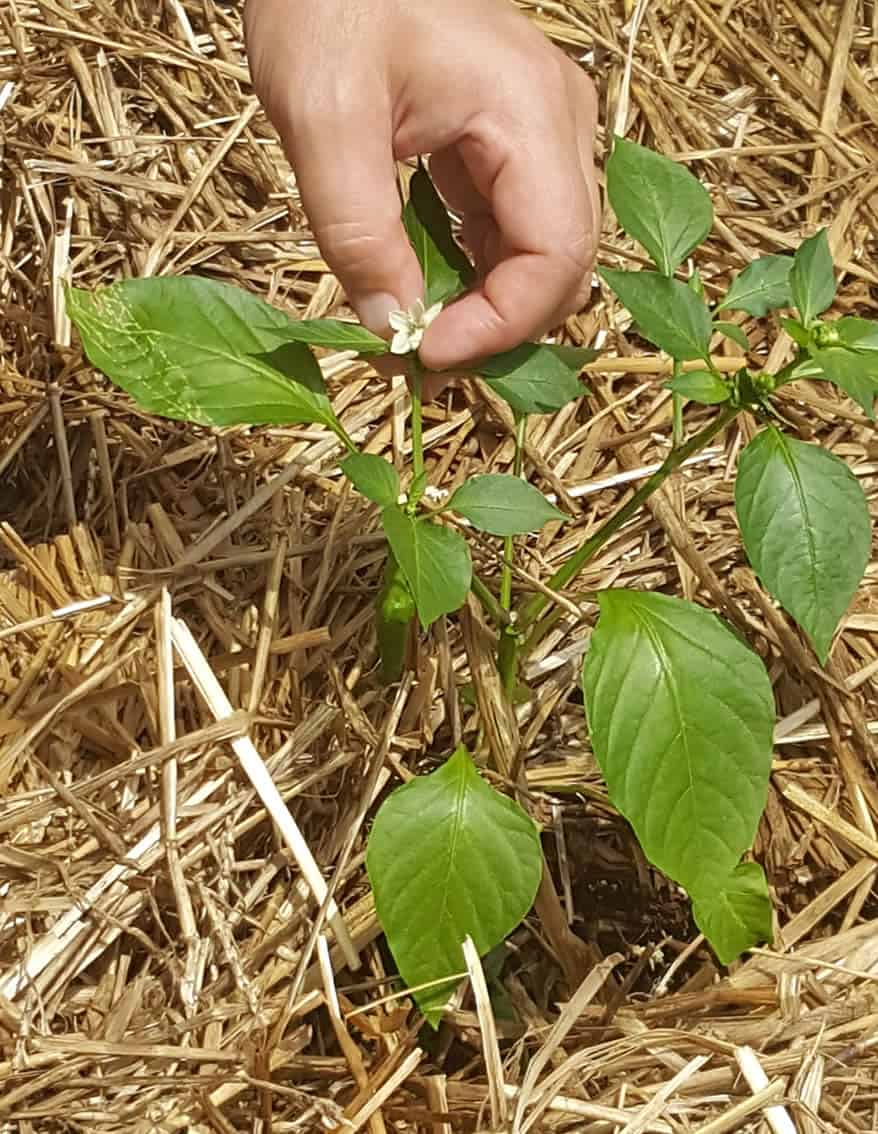
Got any further questions? Ask away! I'm happy to help. Feel free to contact me anytime and I will do my best to answer your questions. -- Mike H.



Costas Giannakenas MD, PhD says
Hi Mike,
Greetings from Greece. All this info was put to (good) use when I started out cultivating my own peppers 4 years ago 🙂
I now grow various species annually (36 species last year) both for our cooking (BTW we love your cookbook) but also to collect, dry and keep the seeds. Most of the seeds I send to a group I'm on on FB where we have set up a Seed Bank (all species included though I am mainly committed to pepper seeds). We then share these seeds amongst members based on their requests and the only obligation is a moral one - when they grow their vegetables, peppers, tomatos, whatever they are requested to return seeds to the Seed Bank. All non-profit and based on solidarity between those striving to preserve heirloom seeds.
Gave you considered posting this article as a downloadable PDF?
just dropping a suggestion 😉
Mike Hultquist says
Thanks so much. I'll have to see about the downloadable in the future! Very happy to hear about the growing! Awesome.
Allison says
I wonder about the comment that spiders are pests? I view them as helpers in the garden, eating the pests. Even if you think of them as pests (why?), leave them as bird food. Use no pesticides!
Thanks - really enjoy your posts.
Mike Hultquist says
Go for it, Allison. As long as your peppers grow as desired. Cheers!
Shelley McLeod says
Hi Mike! I live in South Central Texas. I am a beginner plant grower lol I read that basil likes full sun...well, apparently, where I live full sun is like being ON the sun and it didn't do well at all. For peppers that need full sun in my region, would it be better to grow them in partial shade or maybe a pot in the house? I would really like to grow some peppers, I buy a LOT of jalapenos and no one sells Tabasco peppers around here so I thought I'd grow my own, but I don't want to end up killing them like I did my basil lol
Mike Hultquist says
Shelley, it's hard because there are many factors, but too much sun can be a big issue. I had a similar problem and moved some into pots that I could move with good success. It is definitely worth trying. Just be sure to get enough water, and to treat the soil with good nutrients. Let me know how it goes.
JAMES CARLYLE says
Great stuff-just increased my expertise by a factor or 5—Gratzie!
Mike Hultquist says
Wonderful! Thanks, James! Happy growing.
KK St Aug says
I want to send you pics, so trying to figure that out! Probably have to email ….anyhoo….I only grow datils and jalapeños because I use them mostly and can just buy others. I use ALOT of jalapeños in recipes and for baked poppers. Datil is for sauce(your recipe but I infuse honey with Datil for the tablespoon and use datil vinegar, ACV and splash of balsamic) and minorcan clam chowder. Been following you for years, so will send pics in email! Keep the goodness coming!!! Praying for Texas !
Mike Hultquist says
Thanks so much, KK!! Yes! Sounds wonderful. I appreciate it.
Frank Buhrman says
If you live in an area where the growing season may not be long enough for some hot peppers, consider growing some from seed and keeping them in medium-sized pots that you can bring inside over the winter. Those you can plant outside the next season and get your peppers a lot earlier. My habaneros, for instance, seldom ripen before late September or early October, but with setting out "adult" potted plants in the garden, I have actually gotten them by July 4. Some plants do better than others this way, but it's worth a shot.
Mike H. says
Appreciate the input, Frank.
Robert says
I'm growing scotch bonnets from seed for the first time. So far so good and they are coming up nicely, about 1 inch tall. My questions are these. Is it better to keep them in pots or put them in the ground? And are they pH sensitive in either direction? Many thanks.
Mike Hultquist says
Robert, for scotch bonnet seedlings, either pots (3-5 gallon size) with good potting mix or well-draining garden soil in the ground can work. Pots give you more control for moving around if needed. Scotch bonnets prefer a slightly acidic to neutral soil (pH 6.0-7.0). Good luck with your peppers!
Glenn Huszti says
What is your opinion on need oil?
Mike Hultquist says
Glenn, do you mean Neem Oil? If so, I think it is helpful, as is Sevin, for insects.
Ash says
Hi I'm Ash and live on the south coast in UK.
The hardest thing I find is getting the seeds to sprout regardless of type!
Any ideas?
Kind regards,
Patt Morrison says
I live in zone 4 Wisconsin in a very rural area. How deer/critter friendly are green chili peppers? Was wondering if I need to do some type of barrier around them.
Mike Hultquist says
Hi, Patt. I'm from Northern Illinois originally and I did have some issues with bunnies. Not every year, but enough for me to need a small fence around the garden. You can try sprays, but I found the wire fence most effective.